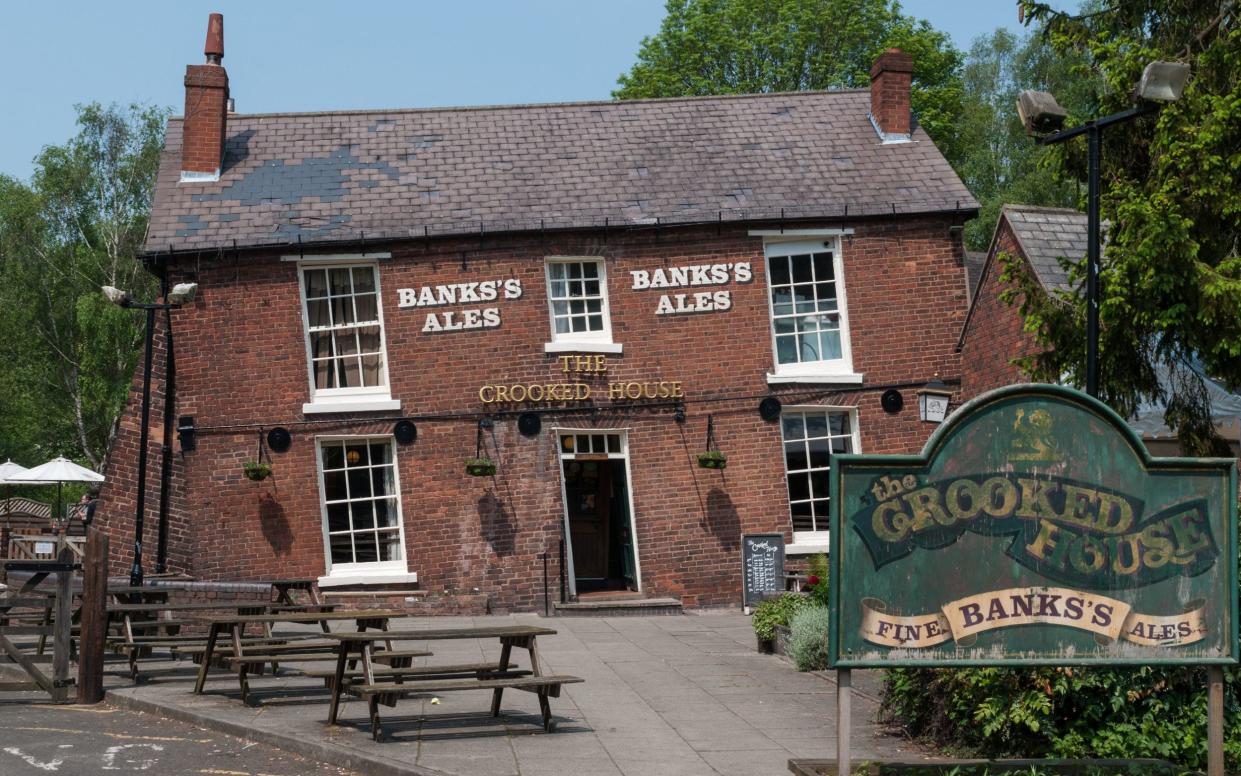Owners of arson-hit Crooked House pub want to rebuild in new location

The owners of The Crooked House have agreed to rebuild Britain’s wonkiest pub – but want to do so in a new location, according to planning documents.
The historic building in Himley, near Dudley in the West Midlands, was burnt out in a suspected arson attack before being demolished two days later.
In February, South Staffordshire Council served an enforcement notice ordering the owners to rebuild the iconic pub following its “unlawful demolition”.
ATE Farms were told to restore the building to the state it was in prior to a fire which destroyed it last August.
However, the owners appealed the notice and a planning inspector has now been appointed to decide the appeal, which will be heard in July.
A document submitted on behalf of the owners now reveals their intention to rebuild the pub on other land they own, along with other developments to “increase footfall”.
It states: “The appellant has not refused to rebuild the building and has actively engaged with the council regarding this.
“Requiring a re-build in the same location, whilst reflective of popular opinion, will not change the fact that the building in that location is not viable as a public house.
“For this reason, the appellant has put forward a sustainable, and what it sees as a genuine and practical solution to the issue … that it rebuild the building on other land that it owns, to operate as a public house, with other development to increase footfall and give the pub and the building a real chance of success as a community asset.

“The proposal locates a newly constructed Crooked House pub along with appropriate parking and landscaping further north off Crooked House Lane and as near to the highway junction with the Himley Road as [possible].”
The document also reveals the reasons the owners claim the former pub had to be fully demolished, even though council officers agreed only to the removal of three elements of the building in order to make it safe.
It says that after the officers left the site there were further issues and “it had not been foreseen that removal of the three elements instructed would render the remainder of the building unsafe”.
The document said: “Removal of the upper sections of the building took with it the steel tie-ins which rendered the remaining structure, in the contractor’s opinion, completely unsafe and at a high (and unacceptable risk) of collapse.
‘Media attention and public attendance’
“The council officers had left the land and … due to the amount of media attention and public attendance, a decision had to be taken quickly as to the immediate safety of the building.
“A decision was made with reference to the director of the appellant that in order to abate the risk, the mainstay of the remaining structure needed to be taken down.
“It was considered that there was a high risk of the building collapsing and causing serious injury or a fatality on the land given the entry on to the land by large numbers of people some of whom were conducting vigils and others removing bricks and other items as memorabilia / for sale.”
There document also reveals plans to build an education centre in the area which would link to local history and would partly include retirement lodges set within the existing woodland.
It adds: “In this regard, the appellant is in the process of preparing a detailed pre-application to be put to the council (and neighbouring authorities).”
‘Rebuild it brick by brick’
The demolition of the famous pub sparked a huge uprising by campaigners calling for it to be rebuilt “brick by brick”. A Facebook page called Save the Crooked House (Let’s Get it Rebuilt) has more than 37,000 members.
Staffordshire Police, which is treating the blaze at the Crooked House as arson, has also made six arrests in connection with the incident.
The iconic building, which dated back to 1735, was changed from a farmhouse to a pub in 1830 and was famous for its wonky appearance.
It became a well-known tourist attraction due to the mining subsidence which caused one side of the building to be approximately four feet (1.2 m) lower than the other.

